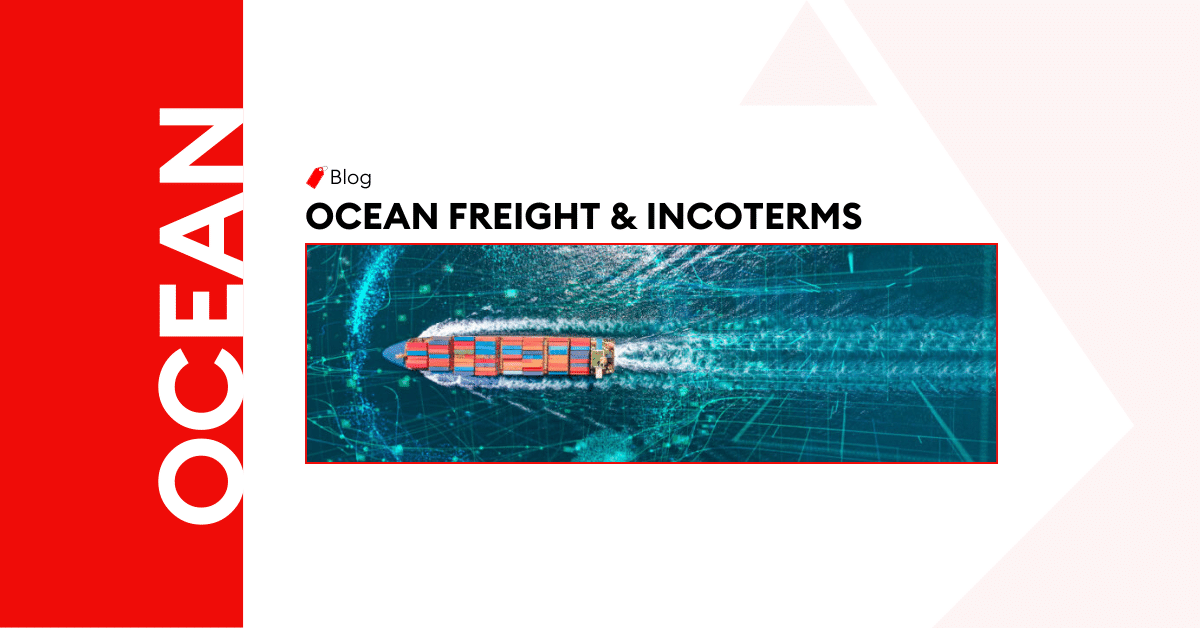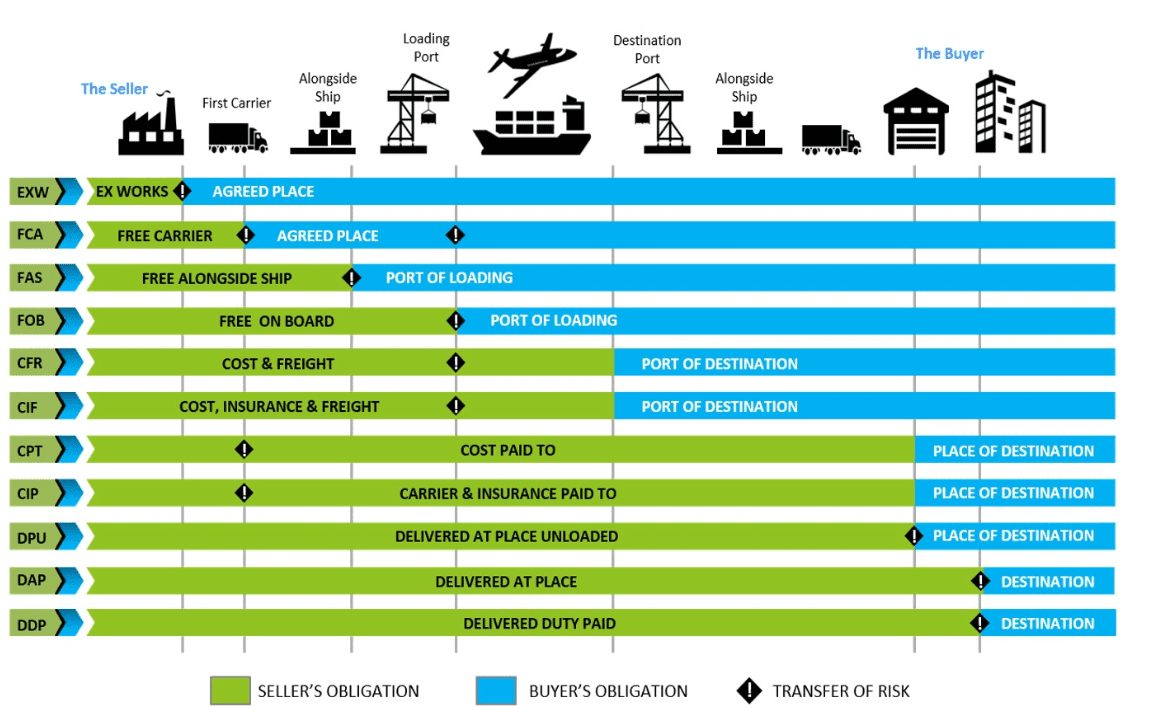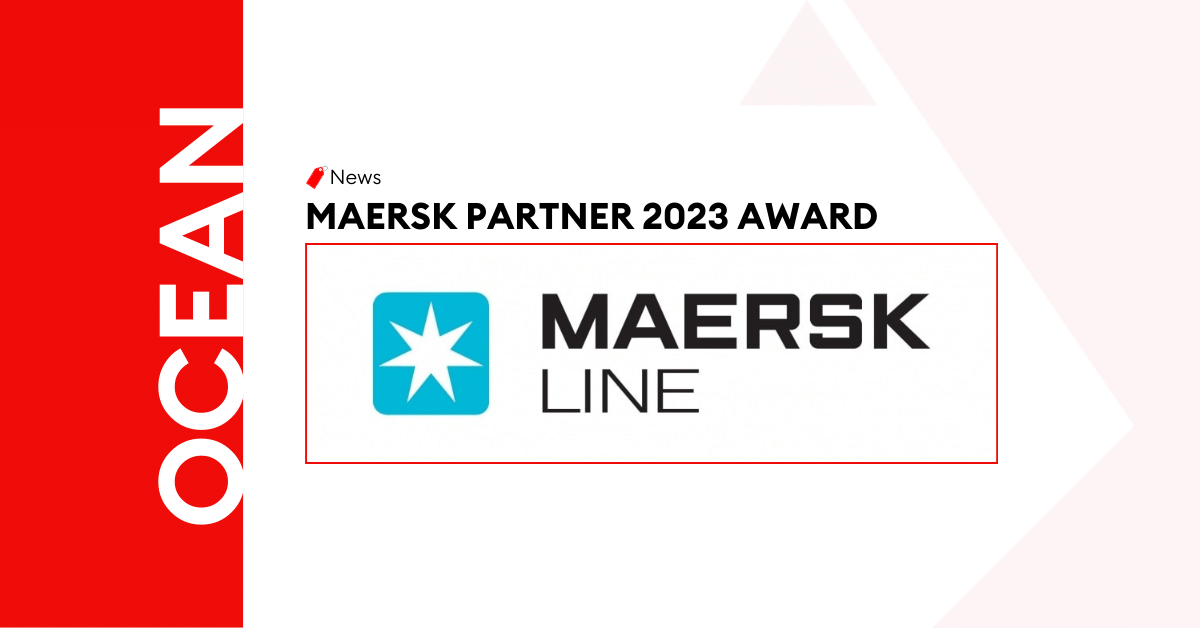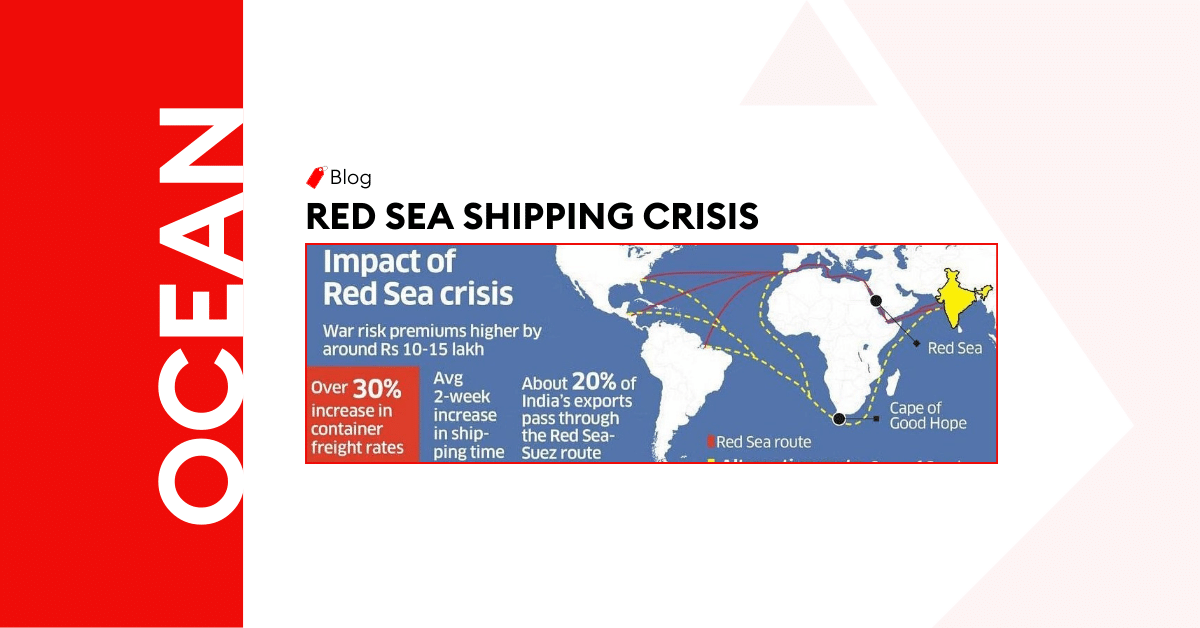
Navigating the Waves of Ocean Freight and Incoterms – A Guide
Ocean freight is a prevalent transport mode in the logistics space. It’s the first choice for shipping bulk volumes of cargo. There are several dynamics to ocean freight and one is the shipping contract or agreement. The agreement is vital and the Incoterms were established to eliminate discrepancies or disputes in the shipping contracts. These Incoterms allocate the responsibilities of both parties involved in shipping cargo.
An ideal understanding of Incoterms and how it affects ocean freight will facilitate smooth shipping, which is why we bring you this post to learn useful information about Incoterms and navigate how it plays on risk and cost.

Understanding Ocean Freight
Ocean freight is a mode of transport that involves moving cargo or goods via sea. Your cargo is loaded onto vessels and shipped to the destination port via sea routes. It’s a mode of transport that has experienced several stages of evolution, spanning from traditional systems to current modern dynamics.
As the oldest solution for international shipping, it has played key roles and is still an important system to date. Let’s have a look at its role in global shipping.
- It provides global connectivity, which is a significant limitation for road and rail transport. Shipping routes connect ports in countries of the same and different continents.
- It provides versatility as it accommodates different types and volumes of cargo.
- It provides an ideal solution for moving bulk quantities of goods. The heaviest cargo can be moved via ocean freight.
- It provides a cost-effective way for shipping goods. One can easily transport large volumes of goods at relatively fair rates.
Key Players in Ocean Freight Shipping
Ocean freight proves effective courtesy of the key roles of each player. These players are equally important as they meet the needs of moving cargo via sea. These key players are the shippers, carriers, freight forwarders, and consignees.
- Shippers: These are the cargo owners who pay for the transportation services. The shippers are responsible for the negotiation of rates and documentation.
- Carriers: These are the brands or companies that offer ocean freight transportation services. They are the shipping lines or vessel owners that move the cargo from origin to destination.
- Freight Forwarders: These are the middle players between shippers and carriers. They are professional or logistics experts that help the shipper handle documentation, negotiate rates, and hand over the cargo to the carriers for transportation.
- Consignee: These are the receiving party. Consignee is the player at the destination who receives the cargo upon arrival.
Types of Ocean Freight Services
Shippers have different needs for their cargo. As a result, there are two main solutions in the ocean freight space to meet these needs.
Full Container Load (FCL
It is an ocean freight type where the shipping container carries only the cargo of a particular shipper. It’s ideal when the shipper wants to transport large volumes of cargo that can fill the entire container.
Less than Container Load (LCL)
This is an ocean freight type that involves consolidating cargo from different shippers and transporting them in a single container. It is the ideal solution for small businesses or shippers with a low volume of cargo.
Factors Influencing Ocean Freight Rates
Freight rates are fees charged by carriers and authorities for the transportation of cargo via sea. These rates are dependent on several factors such as operational factors, market dynamics, and regulatory influences.
Operational Factors
This involves every activity that facilitates the movement of the cargo to the destination port. Such activities include the loading and unloading of cargo, distribution of containers, etc. These activities are fulfilled with a price, so carriers impose a fee to cater to this cost.
Market Dynamics
This involves the forces of demand and supply. Times of high demand increase shipping activities which pushes up freight rates. When the forces of demand and supply are stable, freight rates tend to be stable.
Regulatory Influences
Shipping rules and regulations influence ocean freight rates. These regulations such as security rules, customs duties, and tariffs attract cost. So, they are also considered in freight rates.
Overview of Incoterms
Incoterm is an acronym for International Commercial Terms. They are trade terms used to define the risk, cost, and responsibilities of buyers and sellers in the transportation and delivery of cargo in cross-border trade.
Importance of Incoterms in International Trade Contract
The Incoterms are established to eliminate confusion from international trade contracts. This is a very important feature as it provides a clear framework for cross-border trade contracts. Here is a breakdown that shows the importance of Incoterms.
- It allocates costs to the parties of the contract. So, each party knows what cost to handle in the trade or shipping process.
- It allocates responsibilities to the parties of the contract. As a result, everyone knows the extent of what they are supposed to handle.
- It explains the risk management strategy showing which party bears the risk in different situations.
- It serves as a global standard; hence, it is generally acceptable and eliminates disputes, legal issues, etc.
Explanation of Different Incoterms
There are several Incoterms ensuring order and understanding in international trade contracts. Let’s have a better understanding of these terms.
Incoterm | Explanation |
Free Carrier (FCA) | This depicts that the seller moves goods to a carrier chosen by the buyer and the buyer takes responsibility for the risk and transportation. |
Ex Works (EXW) | This depicts that the seller is obligated to make goods available at the agreed location. Then the buyer takes responsibility for all costs and transportation. |
Free on Board (FOB) | This depicts that the seller has the responsibility of taking goods to the port and loading them onto vessels. The buyer then bears the burden of risk and loss immediately after the goods are loaded onto the vessels.
|
Cost, Insurance, and Freight (CIF) | The seller is obligated to deliver the goods to the agreed port and bears the burden of cost, insurance, and freight.
|
Delivered Duty Paid (DDP) | The seller is obligated to deliver goods at the agreed place bearing all the costs and risks. |
Delivered at Place (DAP) | The seller is obligated to deliver goods at the agreed location but the buyer bears the cost of duties and taxes. |
Comparison of Seller and Buyer Risk Under Each Incoterm
- FOB (Free on Board): The buyer bears more of the risk than the seller.
- EXW (Ex Works): The buyer bears more risk than the seller.
- CIF (Cost, Insurance, and Freight): The seller bears all the risk.
- DDP (Delivered Duty Paid): The seller bears all the risk.
- FCA (Free Carrier): The buyer bears more risk than the seller.
- DAP (Delivered at Place): The buyer bears more risk than the seller.
Choosing the Right Incoterm for Your Shipment
There are several Incoterms but it becomes an issue if you don’t know the ideal Incoterm for your shipment. Let’s discuss pointers that will direct you in using the appropriate Incoterm for your shipment.
Consider Vital Factors
These are some defining factors that even triggered the existence of Incoterms in the first place:
Risk
There is absolute risk involved in the shipping and delivery of goods as cases of accidents, piracy attacks, loss, or damage of goods may occur. So, the risk has to be considered. Each Incoterm has a level of risk allocated to the buyer and seller. You need to understand the nature of your shipment and the risk ratio that best fits.
Cost Implication
Each Incoterm has its dynamics for allocating cost. So, if you have limited finances, you should seek Incoterms that allocate more of the cost to the opposite party.
Control Over Shipment
The allocation of risk and cost somewhat defines the level of control over the shipment. If you desire more control, then you will have to embrace more responsibility for cost and risk. Then go for Incoterms with such conditions.
Evaluating the Nature of Goods and Level of Involvement
The nature of goods goes a long way in determining the level of involvement needed. Fragile goods may require more attention than normal goods. This will reveal the ideal Incoterm.
Case Examples Illustrating the Appropriate Incoterms for Specific Scenarios
Let’s make this concept a bit more practical, by putting it in a real-life scenario.
Case 1
A seller in UAE wants to ship goods to a buyer in Kazakhstan. The buyer doesn’t want to be too involved due to their experience level. As a result, the seller in UAE will have to handle most of the processes like customs duties and transportation.
The ideal Incoterm for this case is DDP (Delivered Duty Paid), which depicts that the seller in UAE will take responsibility and bear the risks. Then the seller delivers the goods to the buyer’s chosen location.
Case 2
A seller in Azerbaijan wants to ship goods to a buyer in Russia. The buyer expresses a desire to take control of transportation and bear the risk from the port of origin.
The ideal Incoterm is FOB (Free on Board). This depicts that the seller will move the goods to the port of origin and load them onto vessels. The buyer then takes responsibility after the seller has loaded goods onto the vessels.
There are several other cases and it’s advisable to seek the help of logistics experts like Al Sharqi.
Understanding the Implications of Incoterms on Costs and Liabilities
Breakdown of Relevant Factors Under Different Incoterms and Risk Mitigation
DAP (Delivered at Place)
- Cost: The buyer takes responsibility for transportation costs, duties, customs clearance, and documentation.
- Liability: Seller bears the risk till the goods get to the agreed location. Then the buyer bears the risk afterward.
- Mitigation: The buyer should ensure that efficient handling and transportation facilities be put in place.
EXW (Ex Works)
- Cost: The buyer is responsible for the cost of transportation, customs clearance, duties, and t taxes from the port of origin.
- Liability: The buyer bears the risk from the port of origin.
- Mitigation: The buyer should clarify with the seller regarding packaging and loading. Then ensure appropriate transport system and financial coverage.
CIP (Carriage and Insurance Paid To)
- Cost: The seller is responsible for moving goods to the carrier. The seller is also responsible for obtaining insurance.
- Liability: The seller bears the risk until the goods are handed over to the carrier after which the buyer bears the risk.
- Mitigation: The seller should ensure proper packaging of goods and do well to employ a competent shipping line.
DDP (Delivered Duty Paid)
- Cost: The seller assumes responsibility for transport to the destination. The seller also takes charge of custom clearance, duties, and taxes.
- Liability: The seller bears all the risk.
- Mitigation: Proper packaging system and the use of a competent shipping carrier is advised.
Best Practices for Smooth Ocean Freight Operations
Here is a rundown of things that must be in place to ensure the movement of cargo with ease, safety, and on time.
- There should be effective communication between all players. This includes the shipper, carrier, freight forwarder, and consignee. Everyone should know what’s happening with the cargo.
- There should be no attempt to boycott or play smart with documentation and compliance with customs regulations. Everything should be at 100%.
- Tracking and monitoring shipment progress is vital and it gives visibility down the chain. It’s ideal to work with carriers and forwarders that offer technological solutions for tracking shipments.
- Plan for the management of unexpected events
How Al Sharqi Can Help ?
With Al Sharqi, you can have a simplified experience on ocean freight and land the best Incoterm contracts. We have a strong foot in the industry and are experienced in navigating businesses through Incoterms and ocean freight.
- We offer both types of ocean freight solutions– FCL and LCL.
- We will help navigate the ideal Incoterm for your shipment.
- We offer ocean freight with the best practices and industry standards.
Learn more!! Reach out to Al Sharqi now.
Conclusion
Incoterms are global standards and useful for ocean freight agreements. With the Incoterms outlined in this post, you can now understand the terms for cost, liability, insurance, and more. These Incoterms help eliminate disputes in shipping agreements and ensure smooth ocean freight services. You are encouraged to consult more resources on this subject matter and seek the help of experts such as Al Sharqi.
Frequently Asked Questions
FCL (Full Container Load) involves a shipper filling a container with his cargo and then shipping it out. It is for large-volume shipments.
LCL (Less than Container Load) involves consolidating the cargo of different shippers into one container for shipping. It is for shippers with less volume of cargo.
Incoterms allocate and boldly assigns responsibility regarding cost and liability to the buyer and seller. For every Incoterm, the buyer and seller understand their roles.
- EXW (Ex-works)- The seller is obliged to make goods available in an agreed location while the buyer bears the risk and cost.
- DDP (Delivered Duty Paid)- The seller bears all the cost and risk until the goods get to the port of destination.
- DAP (Delivered at Place)- The buyer takes charge of the cost and risk after the seller has delivered the goods to the agreed locations
- FOB (Free on Board)- The seller is responsible for the goods up till it is loaded onto vessels. The buyer bears the risk after this point.
- FCA (Free Carrier)- The seller is responsible to deliver goods to the carrier. The buyers bear the cost and risk afterward.
- CIF (Cost, Insurance, Freight)- The seller is responsible for delivering the goods to the vessels and must take care of insurance and cost.
Consider the nature of your shipment if it requires you to give a high level of involvement in the process. Then consider your experience level to know what you can handle as this will let you know if you need to pass over the responsibility to the other party. Furthermore, consider cost and risk.
onsider the cargo type, size, dimensions, level of handling cargo will require, market conditions, and other factors as suggested by logistics experts.
- Gather appropriate information
- Understand the customs regulations properly
- Use the appropriate authorities for the documentation
- Ensure the paperwork is complete
- Provide all that is needed for documentation in the best possible way
There are multiple ways to handle unexpected delays and disruptions in ocean freight, including employing contingency planning to anticipate days of issues. Also, establish strong communication with carriers and forwarders.
Our customer service team is happy to assist you with planning your next booking.

Related Articles
Al Sharqi Shipping and Logistics Wins Maersk Most Valuable Partner 2023 Award
Dubai, UAE – May 24, 2024 – Al Sharqi Shipping is proud to announce that it has been awarded the
Sustainability Milestone: Al Sharqi Shipping Receives 2023 Maersk ECO Delivery Certificate158
Al Sharqi named as the Maersk Line UAE Most Valuable Partner 2022 Dubai, UAE – Al Sharqi Shipping
Strategic Shifts in Maritime Trade: Responding to the Red Sea Shipping Crisis
The Red Sea, a critical maritime artery connecting Europe, Asia and North America but recently it ha







Post a comment
You must be logged in to post a comment.